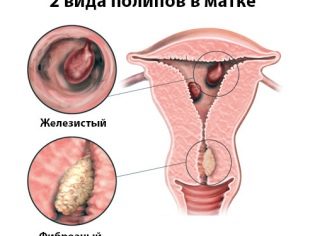Causes of bleeding during pregnancy: what to do?
With a healthy pregnancy, blood from the genital tract should not be. The appearance of this symptom can be a manifestation of quite dangerous pathologies. In any case, bleeding from the genital tract during pregnancy is an important reason for immediate medical attention.
Why does blood appear during pregnancy?
Obstetricians and gynecologists believe that a variety of reasons can lead to the development of bleeding during the carrying of a baby. They can be triggered by emerging disorders in both the mother’s body and the baby’s.
Pregnancy is the most interesting time in the life of a woman, invented by nature. In her body grows and develops a new little life. The baby has one blood flow system with his mother. The baby receives nutrients and oxygen through the general system of blood vessels. His arteries and veins will begin to function much later.
Unobstructed blood flow is a prerequisite for the development of a small embryo. Only in this case, it fully grows and develops, and all its internal organs are properly laid. Disorders that occur in the system of the general uteroplacental blood supply can lead to dangerous conditions for both the future mom and her baby.
It is important to note that the pathologies of the general blood flow system can be acute and chronic. Suddenly frolicking states are accompanied by the rapid development of numerous symptoms. In this case, immediate medical attention is required.
Late medical care can lead to dangerous conditions for the mother and her baby.
Chronic forms of bleeding are accompanied by the development of symptoms that are already less pronounced. The danger of such states is that a pregnant woman is constantly losing blood.
This leads to the fact that in her body there is a rather dangerous pathology - anemia. The lack of hemoglobin and iron has a negative effect on the intrauterine development of the baby. In the future, it provokes the development of anomalies and structural defects of many internal organs.
In the early stages
Doctors say that the first and third trimesters of pregnancy are the most dangerous periods during the development of a baby for the development of vaginal bleeding.
By type of hemorrhage are uterine or vaginal. It is important to note that bleeding from the uterus is usually more dangerous for women.
After examination by a gynecologist
Quite often, during the first half of pregnancy, the expectant mother may have a slight discharge from the genital tract. Often they occur after an examination by a gynecologist.
Usually such secretions are characteristic for the 16-17 week of pregnancy. Transvaginal ultrasound, carried out at 12-20 weeks, can also lead to the appearance of scarlet droplets of blood on underwear.
The appearance of such symptoms causes a real mommy shock.Panic should not be! Such symptoms are quite common and are associated with any minor traumatic damage to the mucous membrane. Usually they completely pass in a few days. If these symptoms do not disappear, then then you need to contact your doctor.
Many women in early pregnancy say that they noticed a slight bleeding from the vagina within 3-4 days. As a rule, such a selection of blood was in the first three months from the moment of conception of the baby. This feature is due to the peculiarities of female physiology and previous menstruation.
Quite often, this situation occurs in future moms who have any dishormonal disorders in the reproductive system.
Embryo implantation
Implantation of a small embryo to the wall of the uterus may also contribute to the development of strong uterine bleeding. This is manifested by the fact that bloody clots begin to stand out from the female genital tract. Their appearance causes a real shock in a pregnant woman, because she, as a rule, does not yet suspect that she is expecting a baby.
After intercourse
The appearance of blood from the genital tract after sex is also quite often recorded situation. Future moms should remember that avoiding such activities is not worth it. However, one should choose more sparing positions for intercourse and reduce its intensity in order not to harm the baby. This recommendation suits absolutely all expectant mothers, especially those with chronic diseases of the female genital organs.
Cervical erosion
Cervical erosion is another cause that can lead to the appearance of blood. It is important to note that this pathology most often appears in the first half of pregnancy. This is largely due to the changing hormones of the future mom.
After sex or carelessly conducted a clinical examination by a gynecologist, a woman may see a drop of blood on her underwear. In this case, be sure to discuss with the obstetrician-gynecologist, who observes it, further tactics. Quite often, doctors choose waiting tactics and carry out treatment of erosion after birth.
Sexually Transmitted Infections
Sexually transmitted infections can lead to severe inflammation in the uterus. During pregnancy, immunity in expectant mothers is significantly reduced. This leads to the fact that the distribution process can be rapid. Ultimately, this process may contribute to the development of bleeding.
Myoma
Actively growing myoma is an education that grows in the uterus. Quite often it happens that this tumor is present in the expectant mother and before conceiving a baby. Altered hormones can promote the growth of fibroids. This is a very unfavorable condition.
Myoma can lead to the development of bleeding, very dangerous for the baby and the woman herself.
Ectopic pregnancy
Tubal pregnancy is a pathology that can lead to the development of complications. The most dangerous of these is the rupture of the appendage (pipe). An ectopic pregnancy can also cause severe bleeding.
Symptoms in this situation develop against the background of absolute well-being. Without the provision of timely medical care, a woman may even die. Hospitalization at the same time is carried out in the gynecological department of the hospital.
Bubble skid
Cystic skid can also cause bleeding. In this case, the course of pregnancy is pathological. In such a situation, a site of connective tissue develops in place of a small embryo. The reasons for the development of this state of scientists so far have not identified. To remove components of the ovum is required conducting gynecological surgical treatment.
Spontaneous abortion
Spontaneous abortion is the most dangerous situation that can develop in the early stages of pregnancy. It is accompanied, as a rule, by massive bleeding from the genital tract. For some women, the process starts gradually.
First, separate blood clots or "spotting" appear. Usually the rate of increase of symptoms is quite large. Within a few hours, massive bleeding appears. If it is strongly pronounced, then the woman may lose consciousness.
Spontaneous abortion is an indication for emergency hospitalization in the hospital. In this situation there is a real threat to the life of a woman. In this case, the removal of all components of the ovum from the uterus.
An emergency infusion therapy with the introduction of parenteral solutions is given to the woman.
On late terms
Incorrect placenta attachment
Bleeding from the genital tract may occur if the placenta is not properly attached. This condition usually develops if it is attached too close to the fallopian pharynx. When making movements, a woman may experience pain in the lower third of the abdomen. If the placenta begins to exfoliate, the bleeding increases markedly.
Tears of the placental blood vessels can also lead to the release of blood from the genital tract. This usually occurs with a variety of traumatic effects.
In this situation, blood streaks first appear, and then massive bleeding begins. In order to save the life of mommy and child, Doctors conduct urgent surgical treatment.
Infections
Infectious processes that occur in the vagina, can lead to the exacerbation of many diseases of the internal genital organs. Pathogenic microbes can provoke this condition.
Erosive forms of disease are accompanied, as a rule, by the development of bleeding. Usually they are expressed slightly. Such conditions usually occur in the second half and in the last term of pregnancy.
Varicose dilatation in the uterus
Varicose dilatation in the blood vessels of the uterus is a frequent pathology contributing to the development of bleeding. Doctors say that it usually occurs in women at 35-38 weeks of pregnancy. This is largely due to the fact that a large fetus puts pressure on the varicose nodes of blood vessels, which can lead to their pathological ruptures.
Polyposis
Polyposis is a pathology accompanied by the appearance of numerous polyps in the body. Often they grow on the inner wall of the uterus. The active growth of the fetus and its increase in size can lead to the fact that some polyps may just fall off.
This is accompanied, as a rule, by the development of bleeding. This situation is often recorded at 32-34 weeks of pregnancy. The severity of bleeding depends on what were the sizes of the detached polyp.
The final period of pregnancy
Hemorrhages that occur in the final period of the baby’s birth are extremely dangerous. The reason for them can be placental abruption.
Placental abruption
This condition is often triggered by a bacterial infection or inflammation in the uterus.
Symptoms in placental abruption can appear gradually or develop rapidly. It depends on how pronounced the pathological changes are.
In most cases, a woman has a strong pain syndrome or a feeling of cramping in the lower abdomen. Blood appears from the vagina. Usually it is scarlet with a streak.
A woman’s condition is deteriorating. There is a strong weakness, attention begins to dissipate, there may be severe dizziness. With the critical development of the situation, the woman suddenly loses consciousness. Bleeding is usually massive.
Placental abruption is an urgent indication for transporting a woman to the hospital for emergency gynecological treatment.In this situation, it is very important to understand that a delay can cost life for both the mother and her baby.
This pathology usually occurs at 37-40 weeks of pregnancy. In some women, placental abruption may be much later. In this case, emergency emergency treatment is required.
Cork discharge
The discharge of mucus plug is the precursor of childbirth. This anatomical structure protects the baby from external factors for many months of its intrauterine development. This situation develops, as a rule, at 38-41 weeks of pregnancy.
The discharge of mucus plug is usually possible after taking hygienic procedures or when lifting heavy bags of food. This condition is accompanied by the development of bleeding, which may be of varying severity.
Symptoms
Many moms start to worry and with the appearance of the most minor clinical signs. A woman begins to panic when the appearance of small bloody clots. The most important thing in this situation is not to panic and not to worry. Any excitement will immediately be transmitted to the baby.
The appearance of red blood is already an extremely unfavorable sign. The severity of bleeding may be different. In some cases, a woman can lose about a liter of blood. This situation can be fatal.
During bleeding, a woman may experience a strong pain syndrome, which is localized mainly in the lower abdomen. In some cases, the pain may be cramping.
Usually the intensity of the pain syndrome increases within a few hours. Often, pain increases after visiting a hot bath or shower. Also, bleeding can occur after the exercise.
What to do?
In case of adverse symptoms, it is very important to immediately call the ambulance team.
When detecting blood on underwear, it is better to immediately limit any physical exercise. The best position is lying in bed. It is better that with a woman all the time were close relatives or husband. This will allow her to worry less and stay calm.
In some cases, doctors recommend putting a roller under your feet or a towel rolled up in a roll. This should be done if a woman has severe dizziness or a “fog” appears in the eyes. Do not take any potent drugs yourself. This can have a negative effect on the fetus.
During the onset of bleeding can not be washed. This can only lead to an increase in this symptom. Hot water has a spasmolytic effect on the blood vessels, which only increases the bleeding.
With severe bleeding, you can put a bubble with ice on the lower abdomen. This can be done only in an emergency, when a woman has a significant threat to life.
Fresh air intake is very important.. Oxygen will help improve brain function and reduce the likelihood of fainting, as well as loss of consciousness. To do this, it is better to open the window, and summer time - a window. A woman should be in a comfortable and familiar setting for her before the arrival of the ambulance brigade.
If there are blood clots on the linen, you can use the usual gasket. This should be done before visiting the doctor. This will help protect the laundry from blood leakage. You can use the usual gasket, which a woman uses during the "critical" days.
Do not use tampons when the bleeding from the genital tract begins. This can only aggravate the course of pathology and lead to the development of dangerous complications. A large accumulation of blood in the uterus will be a real threat to the baby.
Some women, in an attempt to stop the bleeding, begin to brew and consume nettle leaf and other herbs that have a hemostatic effect. This should not be done.Such self-medication can lead to the development of dangerous complications, as it will affect homeostasis.
To stop bleeding at home, it is strictly forbidden to use any hormonal drugs without a doctor's prescription.
Treatment
The onset of bleeding is an absolute indication for the transportation of the expectant mother to the hospital. This is due to the high threat both for her life and for the further development of her baby.
If bleeding has developed in the final period of pregnancy, then there is a high risk that an early delivery will be carried out in the hospital. Such situations are found in cases when it is necessary to save a woman and her child.
If the future mom is delivered to the hospital in critical condition, then she will undergo intensive infusion treatment. In some cases, therapy is carried out under conditions of intensive care unit. In this case, large doses of parenteral solutions are administered to the woman.
During treatment, physicians must monitor fetal vital signs. To do this, its basic indicators are evaluated, with mandatory heartbeat control. Any negative dynamics in the baby - the reason for the urgent delivery, especially in the third trimester of pregnancy.
In the next video you will find a lecture on the topic: "Bleeding during pregnancy. Causes, obstetric tactics, therapy."































